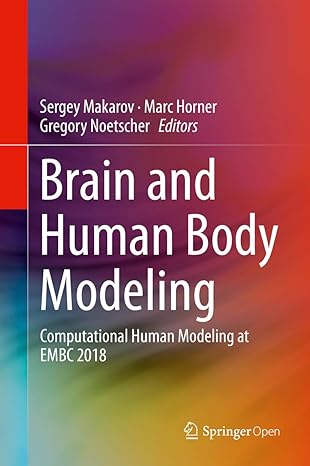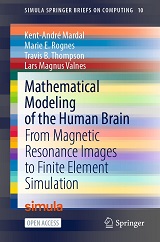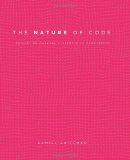
|
FreeComputerBooks.com
Links to Free Computer, Mathematics, Technical Books all over the World
|
|
- Title: Computational Cognitive Neuroscience
- Author(s) Randall O'Reilly, Yuko Munakata, Michael Frank, Thomas Hazy
- Publisher: University of Colorado Boulder, 4th Edition (2021); eBook (Creative Commons Licensed)
- License(s): Creative Commons License (CC)
- Paperback: 186 pages
- eBook: HTML, PDF, ePub, etc.
- Language: English
- ISBN-10/ASIN: B086PLXT8Q
- ISBN-13: 979-8633570106
- Share This:

|
Introduction to computer modeling of the brain, to understand how people think. Networks of interacting neurons produce complex emergent behavior including perception, attention, motor control, learning, memory, language, and executive functions (motivation, decision making, planning, etc).
About the Authors- N/A
- Computational Simulations and Modeling
- Python Programming
- Deep Learning and Neural Networks
- Artificial Intelligence (AI), Logic Programming, Machine Learning, etc.
 Similar Books:
Similar Books:
-
 Modeling Neural Circuits Made Simple with Python
Modeling Neural Circuits Made Simple with Python
An accessible undergraduate textbook in Computational Neuroscience that provides an introduction to the mathematical and computational modeling of neurons and networks of neurons in Python. Build a foundation for modeling Neural Circuits.
-
 Brain and Human Body Modeling: Computational Human Modeling
Brain and Human Body Modeling: Computational Human Modeling
This open access book describes modern applications of computational human modeling with specific emphasis in the areas of neurology and neuroelectromagnetics, depression and cancer treatments, radio-frequency studies and wireless communications.
-
 Mathematical Modeling of the Human Brain
Mathematical Modeling of the Human Brain
The book bridges common tools in medical imaging and neuroscience with the numerical solution of brain modelling PDEs, covers the basics of magnetic resonance imaging and quickly proceed to generating first FEniCS brain meshes from T1-weighted images.
-
 Modeling Creativity - Case Studies in Python (Tom De Smedt)
Modeling Creativity - Case Studies in Python (Tom De Smedt)
This book is to model creativity using computational approaches in Python. The aim is to construct computer models that exhibit creativity in an artistic context, that is, that are capable of generating or evaluating an artwork (visual or linguistic), etc.
-
 Modeling and Simulation in Python (Allen B. Downey)
Modeling and Simulation in Python (Allen B. Downey)
This book is an introduction to physical modeling using a computational approach with Python. You will learn how to use Python to accomplish many common scientific computing tasks: importing, exporting, and visualizing data; numerical analysis; etc.
-
 Modelling and Simulation for Big Data Applications
Modelling and Simulation for Big Data Applications
Long considered important pillars of the scientific method, Modelling and Simulation have evolved from traditional discrete numerical methods to complex data-intensive continuous analytical optimisations.
-
 Python for Informatics: Exploring Information (Charles Severance)
Python for Informatics: Exploring Information (Charles Severance)
This book provides an Informatics-oriented introduction to programming. The primary difference between a computer science approach and the Informatics approach taken in this book is a greater focus on using Python to solve problems.
-
 The Nature of Code: Simulating Natural Systems with Processing
The Nature of Code: Simulating Natural Systems with Processing
A range of programming strategies and techniques behind computer simulations of natural systems, from elementary concepts in mathematics and physics to more advanced algorithms that enable sophisticated visual results, using Processing.
-
 Introduction to Metadata: 3rd Edition (Murtha Baca, et al)
Introduction to Metadata: 3rd Edition (Murtha Baca, et al)
Provides an overview of Metadata - its types, roles, and characteristics; a discussion of metadata as it relates to resources on the Web; a description of methods, tools, standards, and protocols that can be used to publish and disseminate digital collections;
-
 AI Art: Machine Visions and Warped Dreams (Joanna Zylinska)
AI Art: Machine Visions and Warped Dreams (Joanna Zylinska)
The book critically examines artworks that use AI, be it in the form of visual style transfer, algorithmic experiment or critical commentary. It also engages with their predecessors, including robotic art and net art.





